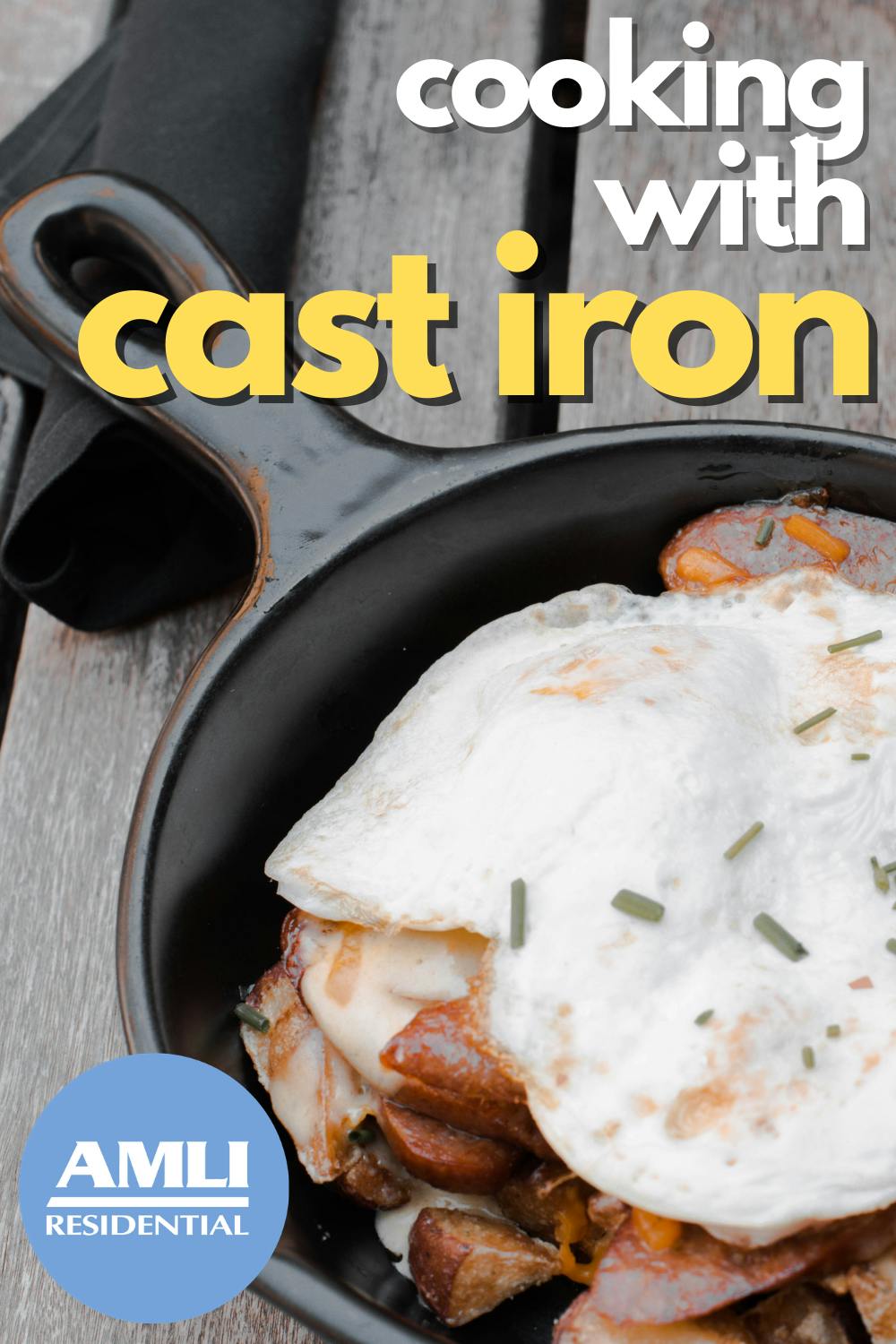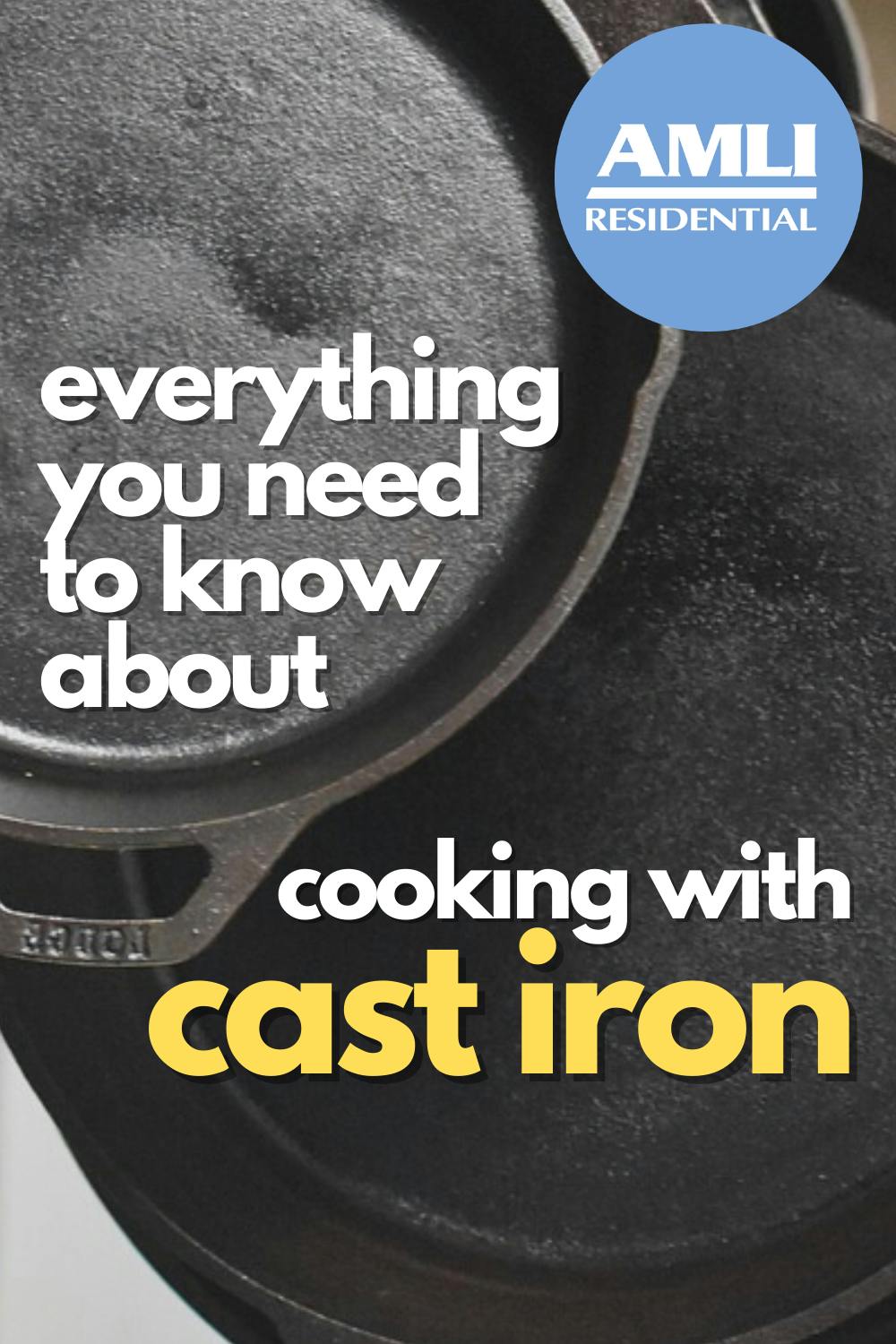We’ve all seen the resurgence of cast iron cooking on Pinterest recently. Skillet pies, skillet quiches, skillet cookies… there’s seemingly no limit to what you can cook in a cast iron skillet.
Cast iron used to be a staple in kitchens for centuries. Cast iron kettles, cauldrons and pots were the perfect pieces of cookware for cooking over open fires, mainly because of the iron’s ability to retain heat and spread it evenly. Plus, cast iron cookware is extremely durable and can last many years with the proper care.
Cast iron cookware began to fall out of popularity after the invention of the kitchen stove in the mid-19th century, and especially after the invention of aluminum cookware in the 1960s and ‘70s.
While cast iron is no longer the most popular type of cookware, one item in particular has survived the test of time: the cast iron skillet. The cast iron skillet was only invented in the late 1800s when flat bottom cookware became popular for use on stovetops, but its versatility and durability has made it a popular item in modern kitchens today.
So, if you haven’t got yourself a skillet yet, here’s what you need to know about how to care for and maintain your cast iron cookware!

Cooking with cast iron
Benefits of cooking with cast iron
Cast iron cookware are incredibly versatile kitchen items. Here are a few reasons why they’re a great addition to your kitchen!
- Cast iron skillets, as well as other cast iron cookware, can be used both on the stovetop and in the oven, not to mention on the open flame, too.
- Cooking with cast iron actually transfers trace amounts of iron into your food! It’s like a tiny iron vitamin, every meal.
- Cast iron cookware isn’t expensive, but they are high-quality items and can last a lifetime!
- Cleaning cast iron is easy if the cookware is seasoned properly.
- Cast iron cookware transfers heat evenly throughout the dish. Food cooked in cast iron is evenly cooked and has a lower chance of burning.
What to look for when purchasing cast iron
If you’re looking to buy your own cast iron skillet, there are a few things to look for.
First, you want to make sure that you’re purchasing a pre-seasoned skillet. We’ll get to the importance of seasoning later.
You’ll also want to start off with a smaller skillet if you’re not used to cooking with cast iron. A 10-inch skillet is always a good go-to for both professionals and beginners!
How to season your cast iron
Seasoning your cast iron cookware is vital for ensuring its effectiveness and longevity. It's fairly easy to season a cast iron skillet, though, so here’s how you can do it at home!
Many cast iron skillets come pre-seasoned, but the iron can become dry over time. Regular seasonings can help make the skillet more nonstick and shiny.
How to wash your cast iron
Cleaning your cast iron cookware properly is vital to maintaining its level of quality. Any remaining water or food can cause the iron to rust, which dramatically lowers the skillet’s overall lifespan.
Use running hot water and an abrasive scrubber to thoroughly remove food from the skillet. A common myth is that dish soap will ruin cast iron, but a small amount of gentle, bleach-free dish soap won’t cause any damage. Make sure to rinse the skillet thoroughly with hot water if you do use soap, though.
Dry the skillet by wiping off the water with a dry towel before putting the skillet on the stovetop on medium-low heat. Leave the skillet on the stove until the heat has dried up ALL the moisture on the pan. Finally, add about half a teaspoon of oil to the pan and brush it around with paper towels until the surface has been totally covered and there are no more traces of oil. Cool the pan completely before storing it.
How to store your cast iron
Store your stacked cast iron with pieces of paper towel between them. If the pan or dish above or below the cast iron is wet, then the paper towels will trap the moisture before it rusts the cast iron.
Maintaining your cast iron
If you’re cleaning your cast iron after every use and drying it properly, then you won’t have to do too much else to maintain it aside from seasoning the skillet when it starts to look a little dry. If your skillet starts to rust or if you acquire an older cast iron, then use these intensive cleaning tips to help you give that old cast iron a new lease on life!
If you’re looking for more tips on how to maintain and preserve your cast iron to the best of your abilities, check out this article here!
What NOT to do to your cast iron
Cast iron is pretty tough and can handle most things thrown at it. However, avoiding these common mistakes can extend the lifespan of your cast iron and cause you less stress overall.
- Do not drip dry your cast iron! Drying this way doesn’t dry the cast iron thoroughly and can cause rust.
- Do not cook cold! Make sure you preheat your cast iron gradually before adding food. The iron heats up hot and fast, so by putting a cold skillet straight onto high heat can cause it to overheat too quickly and burn your food.
- Do not use oven cleaner, scouring powder or bleach! Baking soda and gentle dish soap should be the only cleaners you use to clean your cast iron.
Recipes to make in your cast iron!
Now that you’re a cast iron skillet expert, you can try out these great cast iron recipes! An added bonus to these recipes is that baking and cooking pictures look so much better with a classy cast iron skillet front-and-center.
- Vegetarian lasagna
- Cinnamon bread with cheesecake dip
- Sweet potato, kale and shrimp skillet
- Chicken tamale casserole
- Apple butter pork chops
- Gooey Texas chocolate sheet cake
- Homemade cast iron pizza
- Lemon blueberry scone
Have fun!
Pin it!

Featured photo courtesy Pixabay/Ernest_Roy


 View All Posts by Colleen Ford
View All Posts by Colleen Ford